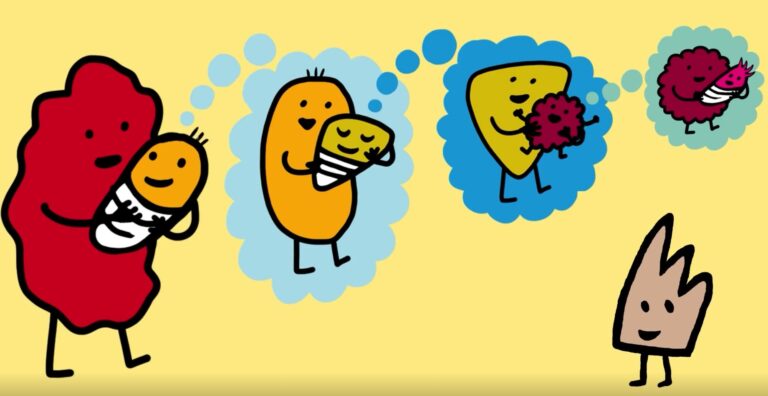(Version française disponible ici)
Federalism has a bad reputation on the left, where it is common to believe this form of government accentuates and institutionalizes conflict among regions. Some say this conflict undermines the will and ability to redistribute wealth among citizens, leaving the country more unequal and unfair than necessary.
The question should be reconsidered: Does federalism really prevent the equitable redistribution of income?
In his address to the Canadian Political Science Association in 1977, Alan Cairns explained that a federal arrangement inevitably gave rise to groups, elites, and governments defined by territory and likely to make claims on that basis.
A more inclusive and universal policy of redistribution between social classes was therefore giving way to a more divisive and limited version based on regional inequalities. Redistribution was becoming less inter-individual and more territorial, and ultimately less generous.
Over the years, this argument has been made many ways. In a more recent work, for example, American political scientist Melissa Rogers argued that countries with more pronounced regional disparities redistribute less income among individuals.
Rogers highlights the lack of cohesion among national coalitions in favour of redistribution, which effectively allows rich regions to slow it down. Disputes around local public goods, or “pork-barrel” spending, as Americans say, have become prevalent.
Data that challenges preconceived notions
However, studies that take a closer look at politics in federations cast doubt on this view. Among federations, some countries are certainly not very favourable to redistribution, such as the United States and Switzerland, but others are much more in favour of it, such as Germany and Belgium.
In a recently published collection of articles entitled Territories of Inequality: How Federalism and Redistribution Interact, I revisit these arguments to see whether the mechanisms that hinder redistribution are as prevalent as we think.
However, she establishes this relationship by comparing a very large number of countries, including many poor countries and several that are not federations. If we refocus the analysis on democracies with a developed welfare state – the countries most in favour of redistribution – we actually find an inverse relationship.
The more pronounced regional inequalities are in these democracies, the greater the redistribution among individuals. This relationship is even stronger if we consider only federations, as suggested in Figure 1.
Why federations can redistribute more
Rather than preventing redistribution among individuals in federations, regional inequality fosters it.
Upon reflection, this result makes sense. Regionally targeted measures represent only a small proportion of the programs implemented by federal governments. Compared to income taxes, public services, and various social transfers, the infamous “pork barrel” does not weigh heavily.
“Virtually everything governments do,” note Robin Boadway and Anwar Shah in their book Fiscal Federalism, “has a redistribution consequence.” By levying the same taxes and providing the same transfers and services in each region, federal governments take more and spend less proportionally in wealthy regions, and they get less and contribute more in poor regions.
Economist Trevor Tombe describes the phenomenon as implicit equalization, which occurs automatically, without intervention from regional elites and governments.
Much like the automatic stabilizers described by economist John Maynard Keynes, a vast redistribution operation takes place on its own, mechanically, year after year. Alongside this relentless, invisible process, disputes over “pork” are largely political theatre.
Thus, the greater the inequalities among regions, the more the federal government redistributes, all things being otherwise equal.
Fiscal autonomy cuts two ways
However, the politics of inequality between social classes also matters. As comparative research on the welfare state shows, redistribution relies upon the generosity of social spending.
The distribution of income between two levels of government, which is characteristic of federations, also plays a role. As shown in Figure 2, when the revenues generated within federated entities are significant, there are fewer fiscal resources available for redistribution at the national level.
Federalism does not hinder redistribution, but higher levels of fiscal autonomy among individual federated entities seems to, by reducing the financial weight of the central government. However, this autonomy can, in turn, facilitate redistribution at the level of federated entities. Quebec, for example, uses its fiscal autonomy to redistribute more than other provinces. The same is true for the Indian state of Kerala.
A matter of political choice rather than structure
In itself, federalism does not really hinder redistribution, even in countries where regional inequalities are significant. As in unitary states, it all depends on the starting inequalities between regions and the generosity of social programs. The fiscal autonomy of federated entities, however, plays a role in determining the scale at which citizens want to establish what Keith Banting and Robin Boadway call the primary sharing community.
The trade-off between sharing at the national level and the autonomy of federated entities involves two important values in a federation, and it can only be defined through democratic debate. Ultimately, redistribution in a federation is less a matter of structure than of collective choice.











